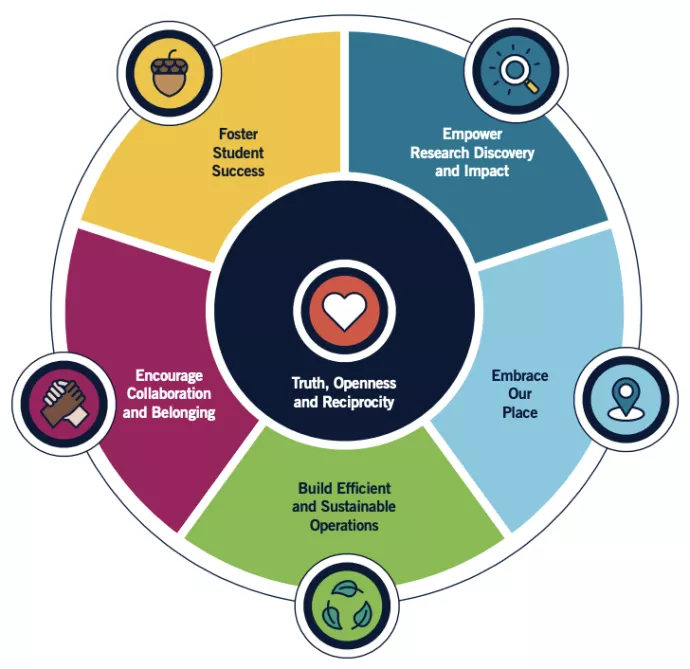This Strategic Framework is also available as a downloadable PDF.

UTM developed this Strategic Framework between late 2020 and early 2022—amid waves of the COVID-19 pandemic. The public health crisis emphasized for our community the importance of a principled flexibility: a willingness to adapt as contexts change balanced with a commitment to clear priorities and values. This balance serves UTM and U of T especially well. From the discovery of insulin a hundred years ago to the present day, our university makes its greatest impact through a mode of learning that remains focused, not fixed, always ready to break new ground as new evidence emerges.
UTM’s Strategic Framework provides focus for our campus and partners. It expresses core priorities that will strengthen consensus, inspire action, and guide investment. But it also designs room for change, giving our community the flexibility to realize our priorities in many ways—including in ways we haven’t yet imagined. It accepts that the future holds challenges and chances for which we can’t always plan. But it also refuses to accept that uncertainty means inaction: it sets the priorities that will inform decisions, providing a tool to understand new opportunities even before they arise.
In balancing structure with agility, this Framework also signals its role in our institutional history. It represents the culmination of earlier exercises in long-term planning. We draw from campus- specific visions in:
And we benefit, too, from plans shared across U of T’s tri-campus, including the:
- 2015 Presidential Priorities
- 2018 Four Corners Framework
- 2018 Response to the Truth and Reconciliation Commission
- 2018 Strategic Research Plan
- 2019 Report on Student Mental Health
- 2019 Low Carbon Action Plan
- 2021 Commitments Against Anti-Black Racism and Anti-Semitism
- and many more
Most of these plans provide concrete recommendations: specific actions with specific deadlines. UTM’s Strategic Framework takes a different approach. It seizes the opportunity to unify existing goals into a common narrative. It provides a shared language to communicate our aspirations. And it makes transparent how we intend to reach decisions and identify areas for additional support. The Framework articulates our plans’ collective purpose, sharing a vision for what we value and believe. It also encourages ongoing reflection on our plans’ success and prepares our community for those times when plans need to change. The Framework isn’t itself a plan; it’s UTM’s guide for continuous planning.
As an expression of UTM’s vision and nimbleness, this Framework matters to our librarians, faculty, and staff, who can use it to focus their efforts; inform departmental commitments; and make new connections—to see how individual contributions build toward collective goals.
The Framework matters for our students, too. It imagines students growing into a world better than the present: more truthful, more sustainable, more innovative, more just. It also articulates a responsibility to the next generation, of which our students comprise an essential part: that the linked aspects of a UTM education—teaching, research, connections, supports—will build toward a future that they’ll find worth fighting for.
